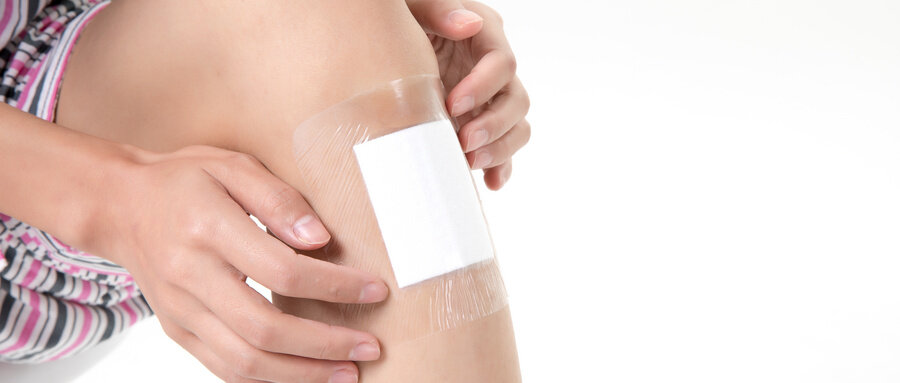Email cannot be empty
Password cannot be empty
Email format error
Email cannot be empty
Email already exists
6-20 characters(letters plus numbers only)
The password is inconsistent
Email format error
Email cannot be empty
Email does not exist
6-20 characters(letters plus numbers only)
The password is inconsistent


The Evolution of Wound Care: Insights from Leading Wound Dressing Manufacturers
Wound care has significantly advanced over the centuries, evolving from simple remedies to sophisticated treatments designed to speed up healing and improve patient outcomes. At the heart of this evolution are wound dressing manufacturers, whose innovations and expertise play a crucial role in modern medicine. This blog explores the fascinating world of wound care, shedding light on the journey and innovations of these essential industry players.
A Historical Perspective on Wound Care
Understanding how wound care has evolved helps appreciate the current advancements. Historically, various cultures had their own methods for treating wounds. Ancient Egyptians, for example, used honey for its antibacterial properties, while Greeks and Romans employed wine and vinegar to cleanse wounds. Despite these early attempts at treatment, it wasn't until the 19th century that wound care began to see more scientific approaches.
The introduction of sterile techniques, antiseptics, and antibiotics revolutionized wound care. However, it was the 20th century that truly marked the beginning of the modern era of wound dressings, setting the stage for the innovations that we benefit from today.
The Role of Wound Dressing Manufacturers
Wound dressing manufacturers are key players in the medical field, responsible for creating products that protect wounds, promote healing, and reduce the risk of infection. Their work involves a deep understanding of biology, materials science, and clinical needs, which is essential for developing effective wound care solutions.
One of the primary challenges faced by these manufacturers is addressing the diverse needs of various wound types. From minor cuts and surgical incisions to chronic wounds like diabetic ulcers, each type of wound requires a specific approach. Leading manufacturers invest heavily in research and development to address these needs, ensuring their products can meet a wide range of clinical requirements.
Innovations in Wound Dressing Manufacturing
Innovation is at the core of wound dressing manufacturing. The industry has seen remarkable advancements in recent decades, driven by a commitment to improving patient care.
Hydrocolloid Dressings: These dressings are made from materials that form a gel when they come into contact with wound exudate. This gel creates a moist healing environment while protecting the wound from external contaminants. Hydrocolloid dressings have been particularly beneficial for managing chronic wounds.
Antimicrobial Dressings: Incorporating agents like silver, honey, or iodine, antimicrobial dressings help prevent infection—a critical aspect of wound care. Silver, for instance, has been used for its antibacterial properties for centuries, but its integration into modern dressings represents a significant leap forward in wound management.
Bioactive Dressings: Some of the most advanced dressings on the market today contain bioactive components such as growth factors, which actively promote wound healing. These dressings represent the cutting edge of medical technology, offering new hope for patients with slow-healing wounds.
Sustainability and Ethical Practices in Wound Dressing Manufacturing
As environmental and ethical concerns become increasingly important across industries, wound dressing manufacturers are also focusing on sustainability and ethical practices.
Sustainable Materials: Many manufacturers are prioritizing the use of sustainable materials in their products. This includes reducing the environmental impact of raw material sourcing and adopting eco-friendly production processes.
Biodegradable Dressings: The development of biodegradable dressings represents a significant step towards reducing medical waste. These dressings are designed to decompose naturally, minimizing their environmental footprint.
Ethical Considerations: Ethical practices in the industry extend to fair labor practices and community engagement. Leading manufacturers are committed to treating employees fairly, maintaining transparency in supply chains, and contributing positively to the communities where they operate.
The Future of Wound Care
The future of wound care holds exciting possibilities, driven by ongoing research and technological advancements. Here are some trends likely to shape the industry:
Personalized Medicine: Personalized medicine aims to tailor treatments based on individual characteristics, such as genetic makeup and lifestyle. In wound care, this could lead to customized dressings designed to meet specific needs, enhancing healing and patient outcomes.
Smart Dressings: The integration of technology into wound care is an emerging trend. Smart dressings are being developed to monitor wound conditions in real-time. These dressings can track changes in temperature, moisture levels, and other factors, providing valuable data to healthcare providers and enabling more precise treatment.
Regenerative Medicine: Advances in regenerative medicine, such as stem cell therapy, offer the potential to revolutionize wound care. By promoting tissue regeneration, these treatments could significantly improve outcomes for chronic and severe wounds.
Global Expansion: As healthcare systems around the world improve, the demand for advanced wound care products is expected to grow. Manufacturers will need to adapt to diverse regional needs, considering factors such as climate and prevalent medical conditions.
Conclusion
The journey of wound care from ancient methods to modern advancements highlights the remarkable progress in medical science. Wound dressing manufacturers are at the forefront of this evolution, continuously pushing the boundaries of what is possible in wound management.
These manufacturers are more than just suppliers; they are innovators dedicated to improving patient care through cutting-edge products and sustainable practices. As the field of wound care continues to evolve, the contributions of these manufacturers will remain crucial in shaping the future of healthcare and enhancing the quality of life for patients worldwide.
The path forward in wound care is bright, with ongoing advancements promising even more effective treatments and solutions. The dedication and innovation of wound dressing manufacturers ensure that the best in wound care is yet to come.

